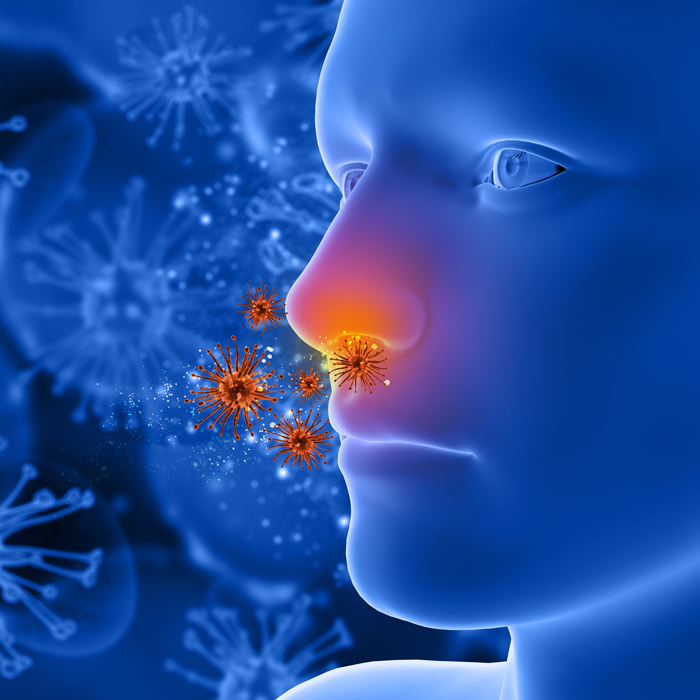
Allergology
An allergy is a chronic disease caused by an inappropriate, unwanted and unexpected reaction of the immune system to exposure to substances that usually do not cause disease and do not harm humans, such as food, drugs, plant pollen, insect venom, etc. An allergic reaction to these substances occurs when they come into contact with various tissues of the body, and they usually cause allergic symptoms in these tissues (for example, on the skin, in the digestive system, in the respiratory tract, etc.). An allergic reaction can cause a variety of symptoms. For example, exposure to upper respiratory tract allergens will cause a runny nose, sneezing, tears, and itching of the face and throat, involvement of the lower respiratory tract will cause an asthma attack, involvement of the skin will cause rashes and itching, involvement of the digestive tract causes abdominal pain, and involvement of the heart and blood vessels leads to anaphylactic reactions.
Skin tests
Skin tests are the main diagnostic tool of the allergist. They are done painlessly, giving a safe picture of the “allergic” antibodies of the body in a few minutes. Contrary to popular belief, skin tests are very reliable even at a very young age – in anyone over 2 months old. Of course, it is necessary that the allergy in question be antibody-mediated, as is the case with respiratory allergies, but also with food allergies with immediate symptoms after eating. They are also useful in immediate (rapid) type drug allergies, as well as in cases of allergy to bee and wasp venom.
Molecular analysis
With the help of molecular diagnostic tests, it is now possible, with a simple blood test, to distinguish the characteristics of an allergy more accurately, since we can know not only to which food the body has developed “allergic” antibodies, but also to which specific food molecules. Take the example of a nut allergy, each containing dozens of individual allergens. Traditionally, a patient with a positive allergy test would not know exactly what any of their positive results mean: do they mean they can eat several fruits at a time without any symptoms other than a slight itchy mouth, or that the patient is at risk of an anaphylactic shock upon contact with even traces of a particular fruit? Is it safe to eat raw fruits or stick to cooked ones? Is it an allergy that will pass or is it a long and persistent disease?
This information is now given by knowing the responsible allergenic molecule in the food, which can be “hard” or “soft”, in which case the allergy fits the respective characteristics. Molecular methods are available for most food allergies (in nuts, fruits and vegetables, cereals, eggs and milk, fish, and seafood), but the usefulness of molecular diagnostics does not end there: it helps to better identify the protein responsible, in case of allergic asthma and allergic rhinitis. Like so, the results of conventional RAST tests can be refined, especially where many positive values appear, such as in patients sensitized to more than one pollen. This helps to better select patients for immunotherapy with environmental allergens, it acts as an effective filter so that only patients with a reasonable expected benefit receive immunotherapy. This contributes to the choice of the most appropriate immunotherapy regimen, based on the content of various molecular allergens in various preparations. Thus, the effectiveness of immunotherapy in a particular patient is increased. Clarifies the responsible molecular allergen in case of allergy to Hymenoptera (bees, wasps). And here the advantage lies in more effective immunotherapy compared to classical research methods.
Delayed reactivity analyses
When a delayed-reactivity allergic disease is suspected, the clinician has a hard time because the allergen is not obvious in time. These are, for example, cases of gastrointestinal allergies in an infant, as well as some types of persistent atopic dermatitis in children, where the search for an allergen (or allergens) usually requires a lot of luck and long painful diets, both for the child and for the nursing mother. Blood tests (RAST) are inappropriate here, as are the classic skin tests on the arm. These are tests that measure antibodies, and in delayed-type allergies, antibodies play little or no role. The only clinical examination that can help diagnose these common conditions are epidermal patches (atopy patch tests). This is a series of special stickers that are placed on the back for 48 hours and contain the products to be tested at a standard non-irritating concentration. The reliability of this test is not perfect because not all patients are able to make a diagnosis. However, epidermal tests are technically simple, completely painless, relatively cheap, and most importantly, are the only clinical test that can guide diet in these cases of gastrointestinal or skin allergy.
Expert interpretation
Allergy tests are an important tool for the medical specialist, but they are not sufficient on their own. The diagnosis is not made by the results, but by the scientific interpretation of the results. This requires special knowledge of immunological mechanisms, world literature and, of course, in-depth analysis of the patient’s clinical data.


